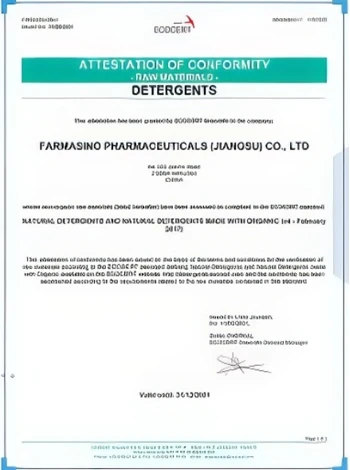



Exploring the Therapeutic Use of Chlorine Dioxide in Medical Treatments
Chlorine Dioxide as Medicine A Controversial Perspective
Chlorine dioxide, a chemical compound with the formula ClO2, is primarily known for its use as a bleaching agent and disinfectant. However, in recent years, it has garnered attention for its proposed application as a medical treatment, particularly in the form of solutions that proponents claim can cure various ailments, including viral infections like COVID-19. This article aims to explore the current understanding and controversies surrounding the use of chlorine dioxide in medicine.
Chlorine Dioxide as Medicine A Controversial Perspective
Proponents of chlorine dioxide as a medical treatment often cite anecdotal evidence and testimonials, claiming it can help with conditions ranging from malaria to cancer. Some advocate for its use in treating COVID-19, particularly during the early stages of the pandemic when effective treatments were scarce. These claims are largely based on a misunderstanding of chlorine dioxide's properties and how they interact with biological systems.
chlorine dioxide as medicine

Health authorities, including the U.S. Food and Drug Administration (FDA) and the World Health Organization (WHO), have vehemently opposed the use of chlorine dioxide for therapeutic purposes. Their stance is supported by scientific research, which indicates that the consumption of chlorine dioxide poses significant health risks. Ingesting chlorine dioxide can lead to severe side effects, including nausea, vomiting, diarrhea, and a potential risk of life-threatening conditions like methemoglobinemia, where hemoglobin is altered, reducing the blood's oxygen-carrying capacity.
Furthermore, rigorous clinical trials assessing the safety and efficacy of chlorine dioxide as a medical treatment have not been conducted. The lack of scientific support and the potential for harm are key reasons for the widespread condemnation of its medicinal use. Misinformation and unregulated promotion of chlorine dioxide as a cure for serious diseases have alarmed health officials and prompted public health campaigns to educate individuals about the dangers associated with its consumption.
As a society, it is crucial to rely on evidence-based medicine and prioritize treatments that have been rigorously tested and proven effective. While the search for alternative therapies is essential, it should not compromise safety or efficacy. The scientific community emphasizes the need for further research to explore potential medical applications of various compounds, but this must be pursued through ethical and controlled methodologies.
In conclusion, while chlorine dioxide has legitimate uses in sanitation and disinfection, its promotion as a therapeutic agent is fraught with risks and lacks scientific backing. Individuals should remain cautious and well-informed, seeking advice from qualified healthcare professionals rather than relying on unverified claims. As we navigate the complexities of medicine, a commitment to safety and evidence-based practices is paramount for public health.
-
Why Sodium Persulfate Is Everywhere NowNewsJul.07,2025
-
Why Polyacrylamide Is in High DemandNewsJul.07,2025
-
Understanding Paint Chemicals and Their ApplicationsNewsJul.07,2025
-
Smart Use Of Mining ChemicalsNewsJul.07,2025
-
Practical Uses of Potassium MonopersulfateNewsJul.07,2025
-
Agrochemicals In Real FarmingNewsJul.07,2025
-
Sodium Chlorite Hot UsesNewsJul.01,2025










